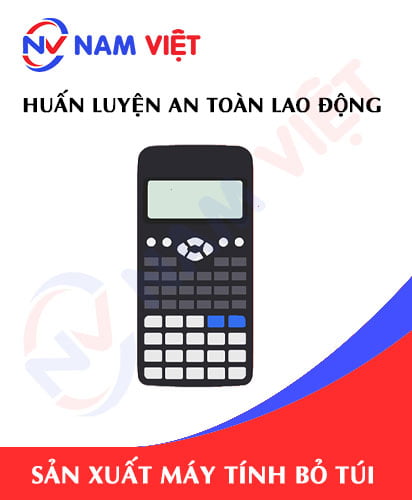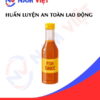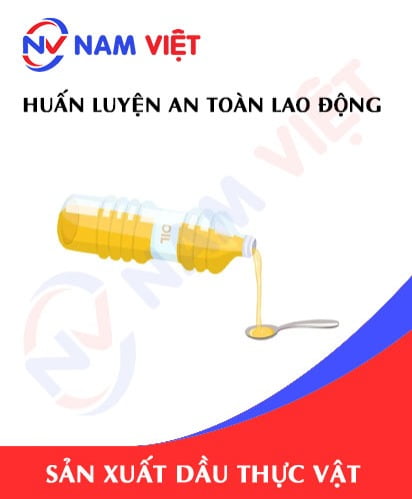Occupational Safety Training for Pocket Calculator Manufacturing
99,000 ₫
Note: The price above is calculated per person. Prices may vary depending on the number of trainees participating in the course and market fluctuations. For more accurate pricing support, please refer to the quotation or contact our consultant directly.
Occupational safety is an important issue in pocket calculator manufacturing factories and needs to be addressed promptly to ensure the health and safety of workers, and enhance the reputation of businesses. The occupational safety training course is one of the effective solutions to raise awareness on how to prevent workplace accidents for workers involved in pocket calculator manufacturing.
Table of Contents
Toggle1. Overview of pocket calculator manufacturing
a. What is a pocket calculator?
- A pocket calculator (calculator) is a type of electronic device used to perform basic arithmetic and algebraic calculations. Pocket calculators are small in size, and are often designed to be carried in a pocket or purse. The features of pocket calculators can vary, from simple functions such as addition, subtraction, multiplication, and division to more complex features such as percentage calculations, statistical calculations, and scientific calculations.
- Pocket calculators are commonly used to solve simple calculations in daily life, or in fields such as mathematics, accounting, economics, and science. In addition, pocket calculators are also widely used in education, in the teaching of mathematics and other subjects. Currently, with the development of technology, many features of pocket calculators have been integrated into mobile devices such as smartphones and tablets.
- In Vietnam, the pocket calculator manufacturing industry has not developed strongly, and the market is mainly occupied by foreign brands.
- According to statistics from the General Department of Vietnam Customs, the import of pocket calculators into Vietnam from 2016 to the present has not changed significantly, with an average of about 50,000 units imported each year, with a value of 150,000 to 200,000 USD. These imported products mainly come from Japan, China, and Taiwan.
- However, with the development of technology and the demand for pocket calculators in education and research, the pocket calculator manufacturing industry in Vietnam has the potential to develop further in the future.

b. Types of machinery for pocket calculator manufacturing
The types of machinery for pocket calculator manufacturing include:
- Plastic injection molding machine: Used to mold the plastic parts of the pocket calculator case.
- Electronic component processing machine: Used to process electronic components during the manufacturing process.
- Assembly machine: Used to assemble the components of the pocket calculator together.
- Printing machine: Used to print symbols, letters, and numbers on the surface of the pocket calculator case.
- Quality inspection machine: Used to check the quality of the product before it is packaged.
- Packaging machine: Used to package the product and put it on the market.
In addition, during the pocket calculator manufacturing process, many other machines are also used such as water spray cleaning machines, plastic molding machines, welding machines, gluing machines, weighing machines, counting machines, drying machines, heat presses, drilling machines, wire cutters, shearing machines, assembly machines, etc.

c. Typical pocket calculator manufacturing businesses
Typical pocket calculator manufacturing companies in the world include:
- Casio: A Japanese company that manufactures a variety of watches, computers, and pocket calculators.
- Texas Instruments: An American company that specializes in manufacturing electronic products, including pocket calculators, scientific calculators, and clock calculators.
- Hewlett-Packard: An American company that specializes in manufacturing electronic products, desktop computers, laptops, and pocket calculators.
- Sharp: A Japanese company that specializes in manufacturing electronic products, including pocket calculators, clock calculators, and telephone dialers.
- Canon: A Japanese company that specializes in manufacturing cameras, printers, and pocket calculators.
- Citizen: A Japanese company that specializes in manufacturing watches and pocket calculators.
- Sharp EL-W506T: One of Sharp’s famous and popular pocket calculator products, widely used in education.
- Victor: A Japanese company that specializes in manufacturing pocket calculators and desktop computers.
d. Specific jobs in a pocket calculator manufacturing factory
Group 1
- Executive director, deputy executive director, department head in a pocket calculator manufacturing factory.
Group 2
- Safety officer: manages safety in the factory, designs safety procedures, supervises and urges employees to comply with safe working procedures.
Group 3
- Manufacturing: The plastic parts and electronic components of the pocket calculator are manufactured and processed before being assembled into a complete product.
- Assembly: Assembly technicians will assemble the small components into electronic circuits, and then assemble these electronic circuits into pocket calculators.
- Printing: After the product is fully assembled, information about the machine type and module will be printed.
- Quality inspection: Quality inspection technicians will inspect each product to ensure that it works correctly and has no defects.
- Packaging: After the product has been quality-checked, packaging staff will package the product and prepare it for shipping.
Group 4
- Jobs in the office, service, sales, marketing.
- Manufacturing management, quality management, human resource management, material management, financial accounting management.
- Research and development of new products.
- Electronic circuit design: Electronic circuit design engineers will develop new circuit designs or customize existing circuit designs to meet product requirements.

2. Overview of the occupational safety training course for pocket calculator manufacturing
Within the scope of this article, we focus on addressing issues related to group 3, because group 3 is the group that directly participates in the manufacturing process and is at the highest risk of occupational accidents. Refer to other groups here
a. What is group 3 occupational safety training?
- Occupational safety training for group 3 are training sessions to equip employees with awareness of how to prevent occupational accidents.
- The occupational safety training course will help employees recognize and prevent dangers, and limit the risk of occupational accidents while working.
REGISTER FOR OCCUPATIONAL SAFETY TRAINING SERVICE
b. Training time
Initial safety training time
- The total training time is at least 24 hours, including examination time.
- 8 hours of theoretical study on the policy and legal system for occupational safety and hygiene
- 8 hours of theoretical study on basic knowledge of occupational safety and hygiene
- 4 hours of theoretical study on specialized training content
- 2 hours of practical training on specialized training content
- 2 hours of theoretical examination at the end of the training course
The safety training center will allocate the time into many training sessions depending on the time arrangement for the employees. But usually, there will be 6 training sessions, the course will take place for 3 days, provided that the manufacturing business can arrange continuous learning time.
Periodic safety training time
- Before the occupational safety card expires, if an employee wants to be re-issued, they must undergo a periodic occupational safety training course, with the periodic safety training time being at least 50% of the initial safety training time.
Explanation: the total periodic occupational safety training time is at least 12 hours, including examination time. After completing the periodic training course and passing the examination, the employee will be re-issued, and their occupational safety card will be renewed.
c. Content of the training course
| No. | TRAINING CONTENT | TRAINING TIME (HOURS) | |||
| Total | Of which | ||||
| Theory | Practice | Examination | |||
| I | Policy and legal system for occupational safety and hygiene | 8 | 8 | 0 | 0 |
| 1 | Overview of the legal document system on occupational safety and hygiene. | 6 | 6 | ||
| 2 | System of technical standards and regulations for occupational safety and hygiene. | 1 | 1 | ||
| 3 | Specific regulations of state management agencies on occupational safety and hygiene when building new, expanding, or renovating works, facilities for manufacturing, using, preserving, storing, and inspecting types of machinery, equipment, materials, and substances with strict requirements on occupational safety and hygiene. | 1 | 1 | ||
| II | Basic knowledge of occupational safety and hygiene | 8 | 8 | 0 | 0 |
| 1 | Basic knowledge of dangerous and harmful factors in the workplace. | 4 | 4 | ||
| 2 | Methods for improving working conditions. | 1 | 1 | ||
| 3 | Safety culture in manufacturing and business. | 1 | 1 | ||
| 4 | Rights and obligations of employers and employees; policies and regimes on occupational safety and hygiene for employees; functions and tasks of the occupational safety and hygiene network. | 1 | 1 | ||
| 5 | Occupational safety and hygiene regulations, occupational safety and hygiene signs, and the use of safety equipment, personal protective equipment; first aid and handling skills for occupational accidents, and prevention of occupational diseases. | 1 | 1 | ||
| III | Specialized training content | 6 | 4 | 2 | 0 |
| Comprehensive knowledge of types of machinery, equipment, and substances that generate dangerous and harmful factors; analysis, assessment, and management of occupational safety and hygiene risks, and safe working procedures with machinery, equipment, and substances with strict requirements on occupational safety and hygiene. | 6 | 4 | 2 | ||
| IV | Examination of occupational safety training content at the end of the training course | 2 | 2 | 0 | 0 |
| Total | 24 | 22 | 2 | ||
See more training content for 6 groups
d. Occupational safety card
After completing the occupational safety training course and passing the examination, the employee will be issued an occupational safety card (in practice, it is often called the occupational safety certificate for group 3).
In which, the group 3 safety card will clearly show information such as: full name, date of birth, job, and specific working environment. It also has the training time, red stamp, and signature confirming the completion of the training course.
According to the regulations on issuing safety cards specified in clause 2 of Article 24 of Decree 44/2016/ND-CP, there are 2 cases:
- If the employer and the employee have a labor contract with each other, the employer must sign, stamp, and initial the safety card for the trained person in group 3 after they have completed the training course from the occupational safety training unit and passed the examination.
- If the employee is a freelancer, seasonal worker, and does not have a labor contract, the training unit must sign, stamp, and initial the safety card for the employee after they have completed the training course from the occupational safety training unit and passed the examination.

3. Identifying dangers when manufacturing a pocket calculator
In the process of manufacturing a pocket calculator, employees working in the environment may be exposed to many types of health and occupational safety hazards, including:
- Working with sensitive electronic parts in a pocket calculator, employees may be at risk of electric shock or fire and explosion.
- Using many chemicals to manufacture electronic parts. These chemicals can cause adverse effects on the skin, eyes, and respiratory tract if not used properly.
- Due to working in an environment with many electronic devices and mechanical machinery, employees may be at risk of collision, falling objects, cutting, injury, or contamination.
- Due to the use of toxic substances such as lead and mercury in the manufacturing process, working in this environment for a long time can cause health problems such as headaches, fatigue, memory loss, and other health problems.
- Employees may get sick or be at risk of health problems due to not ensuring personal hygiene or working in an unsanitary environment.
4. Common types of occupational accidents for employees when manufacturing a pocket calculator
During the pocket calculator manufacturing process, employees may encounter the following occupational accidents:
- Muscle injuries: Repetitive, improper, or strenuous movements over a long period can cause muscle injuries to employees.
- Eye damage: Because the work requires close observation of small details on the pocket calculator for a long time, employees may experience fatigue, headaches, dry eyes, red eyes, or even permanent eye damage.
- Chemical accidents in the manufacturing of electronic components for pocket calculators can occur if safety measures are not implemented fully and accurately.
- Hearing damage: Using electronic machinery and tools for a long time can cause high-intensity noise and sound, leading to hearing damage or ear injuries.
- Knee and ankle injuries: Jobs that require standing for a long time, climbing electrical wires, or transporting goods can cause knee or ankle injuries to employees.
- Electrical hazards: People working in pocket calculator manufacturing must regularly come into contact with electricity, which poses electrical hazards.
- Risk of cuts or punctures: Because the work involves working with small components, cutting knives, metal, or plastic, there is a risk of cuts or punctures.
5. Safety measures when participating in pocket calculator manufacturing
When participating in pocket calculator manufacturing (calculator), it is necessary to comply with safety regulations and implement safety measures to ensure the safety of employees and product users. Below are some safety measures to be implemented:
- Use protective equipment: Employees need to be provided with protective equipment such as gloves, safety glasses, masks, protective uniforms, etc. to minimize risks during the manufacturing process.
- Use safe machinery and equipment: Employees need to be trained to use safe machinery and equipment correctly. These devices include dust collectors, safety gates, safety sensors, etc. to minimize risks during the manufacturing process.
- Ensure electrical safety: The factory needs to have a safe electrical system to ensure the safety of employees and equipment.
- Ensure hygiene and sanitation: The factory needs to have proper sanitation procedures to ensure the health of employees and avoid environmental pollution.
- Ensure the safety of materials and chemicals: The factory needs to ensure that the materials and chemicals used are safe and stored properly.
- Train employees: The factory needs to train employees on safety measures during the manufacturing process to minimize risks and ensure the safety of employees and products.
- Perform product quality checks: The factory needs to perform product quality checks to ensure that the product meets safety and quality standards.
- Periodically organize occupational environment monitoring in factories and enterprises, collect and analyze harmful factors to employees, thereby adjusting to reduce the level of harm to prevent occupational diseases for them.

6. Benefits of occupational safety training for pocket calculator manufacturing
An Toan Nam Viet provides businesses with great benefits after completing occupational safety training courses according to the regulations in Decree 44/2016/ND-CP on occupational safety and hygiene, for companies, factories, and businesses.
- Employees can recognize the potential risks of occupational accidents from which they have preventive measures to avoid occupational accidents.
- Your business can establish risk prevention measures in the manufacturing, operation, and maintenance processes.
- Reduce costs when there is a risk of safety loss in labor.
- Uninterrupted manufacturing will help increase labor productivity and product quality.
- Comply with occupational safety law regulations, avoiding legal risks.
- Create prestige and professionalism in all aspects, thereby raising the brand for your business.
The training courses of An Toan Nam Viet are the solution to prevent and combat external factors affecting each individual so that they can avoid dangers that can lead to injury or, more seriously, death.
REGISTER FOR OCCUPATIONAL SAFETY TRAINING SERVICE
7. Customer feedback after completing the occupational safety training course for pocket calculator manufacturing
An Toan Nam Viet has many years of experience in the mission of accompanying many businesses in Vietnam in general and in the southern provinces in particular. And that responsibility is something very precious to Nam Viet, which is why Nam Viet’s Occupational Safety Training is always focused on becoming more and more professional. And the motivation for An Toan Nam Viet to grow strong to date comes from the positive feedback and suggestions from businesses. Below are the feedback from our partners that we have served.
Bac Nam E&C Investment Construction Joint Stock Company
“The first time I used the service at An Toan Nam Viet, I was very surprised by the enthusiastic 24/7 support of the consulting team. The class organization was very quick and convenient for our company, thank you very much for Nam Viet’s service!”
Hoa Dat Construction and Trading Joint Stock Company
“Nam Viet’s service has helped us a lot in simplifying occupational safety and the work of completing safety records for our work process. The consulting team is enthusiastic and timely in addressing our questions. 5 stars for Nam Viet”
See more customer interviews after using the service of An Toan Nam Viet
8. An Toan Nam Viet’s Occupational Safety Training Capacity
An Toan Nam Viet is a reputable and quality occupational safety training center in Vietnam today. With continuous occupational safety training sessions taking place at manufacturing workshops, factories or construction sites across the country (63 provinces and cities in Vietnam).
REGISTER FOR OCCUPATIONAL SAFETY TRAINING SERVICE
License for occupational safety training
- An Toan Nam Viet has been inspected and certified by the The Safety Department of the Ministry of Labor – Invalids and Social Affairs as being qualified to conduct occupational safety and hygiene training. This further strengthens our capacity for occupational safety training activities.

Materials and lectures
- Before the occupational safety training materials are put into the occupational safety training courses, they have been reviewed and approved to ensure that the lectures are always correct in terms of knowledge and effective when applied.
- The teaching method of our lecturers is synchronized with the teaching standards of An Toan Nam Viet, which is a method that experts in occupational safety and hygiene training have researched and drawn from the teaching process to bring the highest knowledge acquisition efficiency to students.
Facilities
- Controlling the factors in the classroom that affect the training process will increase teaching performance and the effectiveness of students’ knowledge acquisition.
- Our facilities supporting the training course always arrange spacious classrooms that meet standards for area, lighting, training equipment, etc.
9. Nationwide reputable and quality safety training center
At An Toan Nam Viet, we always prioritize our professional dedication to occupational safety training. For us, imparting the knowledge of self-protection to workers so they can have a safe foundation on their path to making a living is contributing to building the country.
To ensure effective training, we prepare carefully and meticulously every little detail, even the smallest. From preparing tools, equipment, teaching devices to curricula, materials, sound, and lighting.
Our occupational safety training lecturers are experts with many years of experience in the field. They even have research projects to identify risks in all occupations and how to prevent them.
The lecturers’ lectures are drawn from practice and conveyed in a vivid and easy-to-imagine way to the employees. These factors help employees feel comfortable during the learning time and acquire our taught knowledge well. Of course, the knowledge conveyed always closely follows Decree 44/2016/ND-CP.
From there, they grasp many measures to prevent dangers and how to protect themselves. At the same time, they also apply it in the most appropriate way in real work.
Our safety training center is proud to be a reputable and professional provider of occupational safety training services with the following advantages:
- Competitive training costs but training quality is still guaranteed.
- Flexible training schedule with the manufacturing situation of the company.
- Occupational safety training certification procedures are fast and comply with legal regulations.
- Training lecturers are people with many years of experience in the profession.
- The classroom controls factors affecting the training process to increase teaching performance and the effectiveness of students’ knowledge acquisition.
- The lectures are compiled to be suitable for occupational safety work in businesses.
- An Toan Nam Viet works with dedication and professionalism to support customers accurately, and quickly.

10. For more information, please refer to the occupational safety training documents for pocket calculator manufacturing
- Occupational safety documents for pocket calculator manufacturing (calculator)
- Set of occupational safety training documents
- Set of occupational safety training test questions
- Multiple-choice test for occupational safety in pocket calculator manufacturing
- Slides for the occupational safety training lecture on pocket calculator manufacturing (calculator)
1 review for Occupational Safety Training for Pocket Calculator Manufacturing
No comments yet















namchinh.haiphong341
Triển khai nhanh gọn và chu đáo, tôi rất hài lòng!